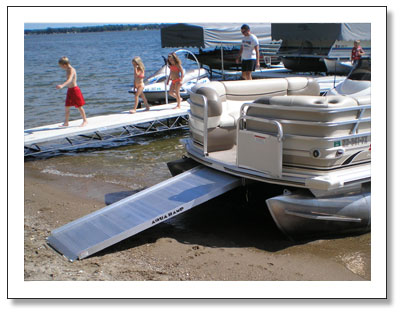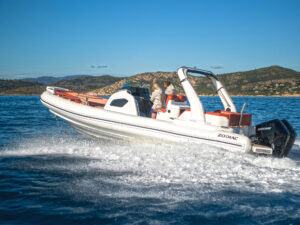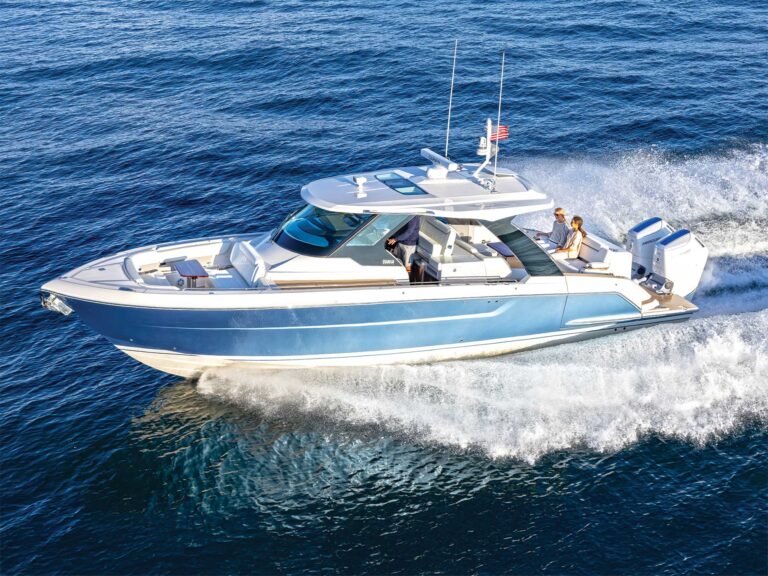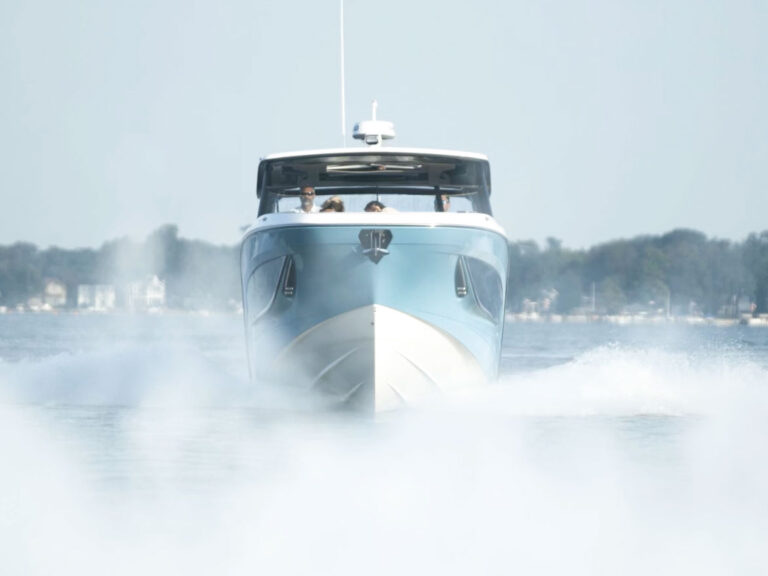
AquaRamp
One of the benefits of owning a pontoon boat is that you can beach the craft easily for shore excursions — and even store the boats over the course of the season by nudging them up on a gently sloping bank and securing the watercraft to stakes. That’s how the majority of the watercraft are “docked” at the pontoon boat owner’s club I belong to, and some members actually prefer beaching their boats to keeping them in slips along traditional docks.
That’s especially true of those with older pontoon boats, which are supported by aged pontoons or are veterans of collisions with logs that are at risk of taking on water. A leaking log can sink a docked pontoon boat half out of sight in the depths, while the same leaky boat beached against the shore in the shallows between uses can only sink so far no matter how flooded the log becomes, making salvage quite a bit simpler!
The problem with beaching a pontoon boat for seasonal-storage or short-term sightseeing is access: the height of the deck off the beach or shore can approach three feet with some models, creating access problems. Getting on and off the elevated deck of a beached pontoon can be difficult even for agile owners and their guests, let alone the young and the elderly. Couple that with the coolers and tackle boxes and other items that many boaters like to take aboard each trip, and the loading and unloading process can get downright dangerous.
I’ve seen attempts to tackle the problem, everything from common footstools and simple 2×4 ramps to elaborate landings made of cement blocks stacked into steps. I’ve even seen pontoon boats festooned with arched aluminum ramps made for loading ATVs onto pick-up trucks, but never witnessed anything I felt was practical enough to consider.
Several years back, however, I ran across an ad for the AquaRamp, a ramp made specifically for pontoon boat access that extends off the bow when needed and slides up under the deck when not in use. I installed one in a couple of hours with the assistance of my wife, and it has proven to be one of the handiest accessories I have added to the family pontoon. I use it as much now, in the off-season when it’s dry docked, as I do on the water during the boating season. My boat is stored on foam blocks during the winter, and climbing aboard its elevated position to clean off the deck, check for critters and adjust protective seat covers was problematic –until I installed the ramp.
The AquaRamp wasn’t cheap, retailing for $895. Nor is it especially light, at 65 pounds, due to its use of composite wood planking. The company has since changed hands, but an all-aluminum AquaRamp II model is now available from **Handi-Ramp** that weighs significantly less than the original, and the stock AquaRamp II models are six inches wider than my 30-inch-wide original. The dimensions of the new model are 36 by 104 inches.
Like its predecessor, the AquaRamp II is easy to install, making an excellent off-season DIY project if you are looking for something to tackle. And once in place the ramp is out of sight and out of mind, tucked under the deck on rails where it is locked securely in the running position with a simple pin. When it’s time to use the ramp, it is easy to slide out, use, and slide back into the stored position. The AquaRamp II retails for $1250, and custom sizes can be ordered – including ones to fit the original 30-inch-wide AquaRamp mounts.
SUGGESTED READING









